2005 DCI East
Having not seen a drum corps competition in almost 20 years, I took a day trip out of NYC on August 6, 2005 to see the DCI Eastern Classic, the final major DCI competition prior to the championship competition in Foxboro, MA. Changes in technology and style had radically changed the content of the shows, but the day-to-day lifestyle of the performers on the road remained remarkably the same. Corps still slept in gymnasiums and endure cold showers (since schools turn off their water heaters in the summer). Touring involved a crazy schedule with frequent overnight travel and 8AM wakeup calls for rehearsal at 9AM. The faces have changed, but the diverse personalities universal to the human condition remained as part of a long tradition.
Marching: The most obvious difference is the style of marching. Gone are the days of symmetrical geometric patterns and "marking time." Rapidly changing abstract shapes flow from drill design software that existed only in primitive form two decades ago. One might even suspect the influence of quick-cut visual style pioneered by MTV that also transformed television and film in the '80s. Though the marching demands on the performers are somewhat greater, I suspect that these challenges also make the work more interesting and less tedious than it was for my generation.
Dance: Dance was just starting to gain a foothold in guard work when I participated in the early '80's. The military flag and rifle maneuvers of drum corps' early days have now been replaced by almost continuous dance. Even the horn lines are often asked to perform stylized movement when playing and join with the guard when not playing. One could argue about the quality of the choreography, or shudder at the thought of having to roll around on the ground in some of the lesser-quality venues, but few can say the work isn't more visually interesting.
Design for Video: The widespread availability of multi-camera video with closeups and commercial distribution of drum corps video means that the video audience for drum corps is probably significantly larger than the audience that experiences it live. While many of the subtleties of dance are lost to stadium viewers due to the distances between performers and audience, video closeups can bring those nuances right into viewers living rooms. This makes the product somewhat less ephemeral, although it reduces one of the prime philosophical values of drum corps as a live performance art.
Pit Percussion: The logarithmic increase in pit equipment over the past 20 years is almost comical. It is almost like comparing the Toyota Corollas of old to the Hummer H2s of today. Once upon a time, all instruments had to be marchable, including timpani, which were almost painful to watch. Now, large carts carry in a wall of marimbas, xylophones, chimes, and various effects instruments that are, miraculously, set up and torn down in a couple of minutes. This is one "improvement" that completely baffles me since my interest is the hornline and drum batter, although I guess there are percussion enthusiasts who are delighted.
Amplification: Self-contained amplification is now used for the pit percussion instruments, which permits use of instruments (like wind chimes and shakers) that would have been completely inaudible 20 years ago. I'm sure this change has been controversial and it also strikes me as unnecessary. Pit percussion has long had more presence on recording than live and, as with live theatre, live drum corps audiences now expect an equivalent sound to what they've heard in their living rooms. A primary concern might be that amplification would be an opening to electronic instruments or to more ill-conceived ideas like the voice-over used by the Seattle Cascades. If you want to hear electronically generated music, you can enjoy it in the comfort of your own home.
Three-valved bugles: Bugles have steadily grown from the straight bugles of military origin, through the trigger / piston and two-piston configurations of the 70's through to the three-piston instruments of today. Two valves were not that big a limitation since the instruments were pitched in G and usually played above the notes that were unavailable without a third valve. I seem to recall the sound being slightly darker, although the change is very subtle and largely insignificant to the participants and audiences of today. I'm not sure what the rationale for using indigenous instruments is, but I'm sure the instrument companies enjoy being able to service a captive market. Interest in providing a homogeneous instrument appearance is doubtless also a factor when requiring corps to purchase specialty instruments rather than permit the use of higher quality but more varied personal instruments.
Proliferation of Vehicles: When I marched with the Blue Stars in 1980, we had three buses, an equipment trailer (pulled by a large pickup) and a staff Winnebago. Now, it is not unusual for corps to travel four performer buses, a staff sleeper bus, two semis of equipment (with sleeper cabs for the drivers), and a semi for food service. Given the rising price of diesel, I shudder to think of the fuel costs needed to tour a drum corps.
Growth of Contra Sections: Because the ear is less sensitive to low frequencies and because drum corps perform in the open air, only the upper harmonics of the contrabass bugles are usually audible. Some corps seem to have addressed this acoustical inequity by adding additional instruments. While my 1984 Scouts had 8 contras, both Crossmen and Vanguard marched 12 contras this year. It is a stunning site, especially since the instruments are physically larger (with an additional value) than their predecessors. This does succeed in making a noticeable sonic difference, but I have immense sympathy for the young men and women who have to lug those damn things all over the country (including parades) in the blazing heat.
The Music-Education Industrial Complex: Although drum corps is an excellent summer activity for youth, a fertile medium for the development of marching band ideas and an exceptional training opportunity for aspiring and practicing high school band directors, it is also a business entity masquerading as a non-profit. Drum Corps International is the organizational and sanctioning body for competitive junior drum corps in America and I'm sure it remains today what is was in my day: a political body concerned primarily for preservation of its own power and financial viability. DCI is firmly aligned with the business interests of commercial instrument and uniform manufacturers, as a quick glance at banners of the sponsors of the Allentown show would attest: Zildjian cymbals, Pearl drums, Dynasty bugles, King bugles, Sibelius scoring software, A.J. Wright, Yamaha everything, Stanburg Uniforms, Winter Guard International, Bands of America, The Band Hall, FJM Image Makers. The Mouse has joined the fun with Disney Magic Music Days. Even the military has jumped in by promoting the Marines' President's Own Drum Corps - which should be looked upon with concern since Marine musicians are also trained soldiers that are being sent to die for oil in foreign lands.
Generational Transformation: While the roster of member drum corps remains remarkably the same, the activity is fitted with age limit of 21 that forces constant renewal in performers. With a few notable exceptions, the creative staffs of drum corps are in their 20s and 30s. When I visited with the Scouts prior to the show, I found that there was no one on the road who hailed from my generation, though a significant leadership dispute and transition a few years ago was probably a factor.
Set Pieces: Most corps still rely on bodies, instruments and guard implements to create the visual aspect of their performances. However, rules have apparently changed to permit the use of set pieces. Restrictions on setup time and portability apparently (thankfully) limit the size and scope of these pieces. In 2005 in Allentown, only the Seattle Cascades incorporated set pieces which, along with a hopelessly saccharine voice-over, added a cheesy quality to their performance. The permission of set pieces is understandable in the context of expanding guard equipment and bloated pit percussion. But the logical conclusion of this trend would be major structures or, perhaps, even a move off the football field and into the gym (winter guard) or auditorium (i.e. the Broadway musical "Blast"). None of these conclusions seem terribly satisfactory to this writer.
Silly Names: The individual parts of a twelve-minute drum corps show are often, but not always, linked by some unifying theme. The novel aspect of the past two decades is the obligatory pompous name which is announced immediately prior to a corps performance, in place of an monologue that used to be used to give some information about the corps. The attempt seems to be to give the shows an air of high art, but the competitive and athletic aspects of the activity make that attempt seem silly.
Repertoire: The long-form nature of a drum corps show leads to somewhat abstract adaptations of existing works that manage to extract key themes and high points without having an overtly greatest hits quality. The primary change seems to be a move towards classical and ersatz-classical scores and away from jazz and pop as source material. Contemporary pop music is often less dependent on melody and harmony and more dependent on computerized timbres and idiomatic vocal effects, thus making it less suitable for adaptation to brass and drums. The long shadow of Stan Kenton and his immediate successors seems to finally have faded as big band jazz has become increasingly esoteric and no longer creates popular personalities (like Maynard Ferguson) or accessible pieces (like Maleguena or Ya Gotta Try) suitable for the larger drum corps audience.
Higher Levels of UV Radiation: Drum corps perform and rehearse almost entirely outdoors, leaving the participants with significant exposure to the summer sun and very dark summer tans. Man-made degradation of the ozone layer over the past 20 years has increased levels of UV radiation, although more restricted use of CFC coolants seems to be reversing that trend. However, these young performers may have to pay additional dues in their future with skin damage and increased incidences of skin cancer.
Plot: Many corps have attempted to unify their shows with plots. However, the brevity of drum corps shows and the frenetic rush of different activities on different parts of the field eliminate the focus necessary for clear storytelling. With the increasing focus on performance for the video camera, this may be less of an issue for the video audience.
Brass and Drum Sound: Despite the changes in the instruments and repertoire, the sound of drum corps brass has remained remarkably unchanged. A brass band is a brass band and no matter what you write for them, they still sound like a brass band. Similarly, there isn't much you can change about drum corps drums at this level of technical execution. There seems to have been no major improvement in brass technique and I seem to hear fewer high soprano notes that in my day. Perhaps it is the increased physical demands of the marching or, perhaps, an aversion to risks that could reduce those precious and inflated caption scores. There are very few solos, and what few there are are stunningly brief (sometimes only a half-dozen notes) and flat in pitch.
The Internet: 20 years ago the Internet was a nascent technology primarily used by universities. Today it is an integral component of American life and of drum corps. DCI has an extensive promotional website with premium subscription content that includes downloadable performance recordings from recent shows. All corps of any significance have individual websites that sometimes include portals for e-mail communication with corps members on the road (who rarely have Internet access). While the DCI website myopically focuses on the present and recent past, numerous websites are available with archival photos and information about older incarnations of current organizations as well as corps that have long passed into the mists of history.
Distinctions Between Corps: As with professional sports teams, the organizations themselves often have a personality that transcends complete transitions of personnel over the years. While DCI standardizes equipment and performance parameters and corps tend to cross-pollinate ideas among themselves (such as the obligatory swords now used sporadically by rifle squads) there are still unique qualities to each corps. Subtle choices can be made, like picking white shoes over black shoes (which is both more exciting to watch and more difficult to execute cleanly) or eliminating the on-field pre-show warmup (which adds a more ominous quality of surprise).
Drum Corps as Sport: The approach to drum corps as an athletic activity rather than an artistic endeavor has always disturbed me, since I am inclined to view other dance and music performances from the aesthetic rather than the physical. While athletics are easily and more objectively quantifiable with scores and elapsed times, the notion that you can quantify an artistic experience into a single score is an anathema to anyone with a philosophical respect for beauty and the complexity of the human experience. The athletic component of a performing arts is certainly present, as in a dancer's majestic leaps or a trumpeter's piercing high notes. But the contemporary desire to oversimplify and focus on the superficial and novel has hopelessly corrupted the artistic beauty of ice skating and ballet into track and field. The 20th century trend toward corporatizing, homogenizing, mechanizing, and mass-marketing of performing arts is quite visible in DCI.
However, competition has been an integral part of the drum corps experience for decades, perhaps hearkening back to it's military roots and to those now-defunct starting guns that used to signal the start of every performance. Those of us who look at Drum Corps as art will be forced to simmer quietly as our beloved shows are described as "Musical Games" performed by "Musical Athletes."
Loss of Individual Identity: From uniforms to standardized instruments to synchronized movement, drum corps rarely provides a vehicle for free expression of individual identity or creativity. The artistic driver of a drum corps is the creative staff, with individual members serving primarily as parts of a larger machine. The group dynamic is also dependent on the weakest links and a few members with attitude problems can darken the experience both on field and off. This makes drum corps a largely mind-numbing exercise in indoctrination that can be an exercise in frustration for those of us with independent and creative spirits.
Consuming Time: Drum corps can be viewed as a distraction from development of skills needed to function in the adult world. For most members, the musical skills developed will not contribute to either lifelong musical involvement or musicianship at a professional level. College-aged students (other than aspiring band directors) might better use their summers doing internships that would either give them entry-level experience (which is increasingly hard to find without an internship) or an opportunity to more directly help society. Like bell choir, drum corps is an essentially meaningless activity requiring tremendous investment of man-hours and money with limited tangible benefit to the participants.
Like High School, youth activities like drum corps can be seen as an artifact of the industrial revolution that requires occupying the hours of adolescents because they are no longer integrated into the functioning of the larger society and have the potential to engage in sociopathic activities that are detrimental to society. Like the military or athletics, drum corps provides training in discipline and teamwork. It also provides opportunities for developing social skills with a few lifelong friendships and occasional romances thrown in along the way.

2005 DCI East

2005 DCI East
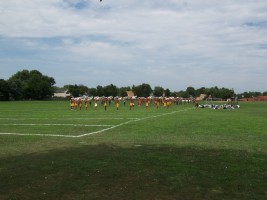
2005 DCI East

2005 DCI East
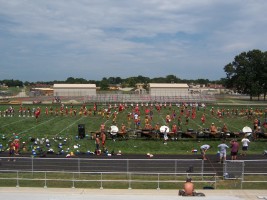
2005 DCI East
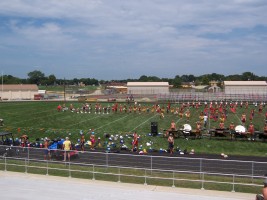
2005 DCI East
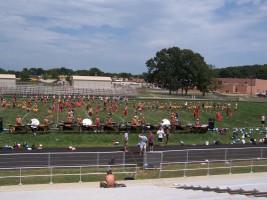
2005 DCI East
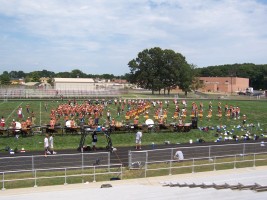
2005 DCI East
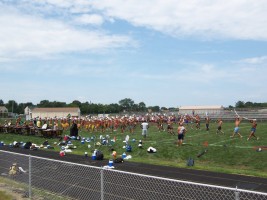
2005 DCI East
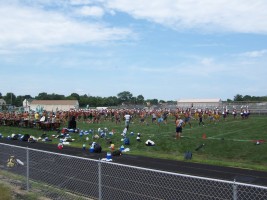
2005 DCI East

2005 DCI East
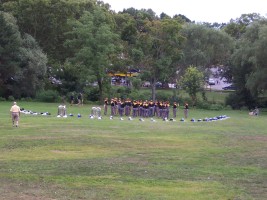
2005 DCI East
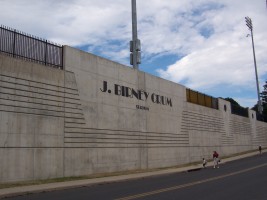
2005 DCI East
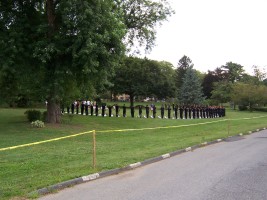
2005 DCI East

2005 DCI East
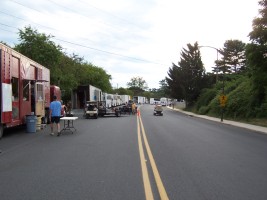
2005 DCI East

2005 DCI East
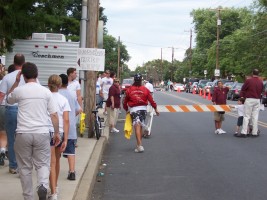
2005 DCI East
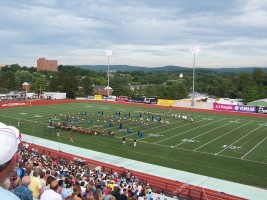
2005 DCI East
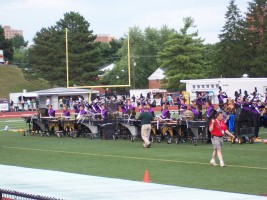
2005 DCI East
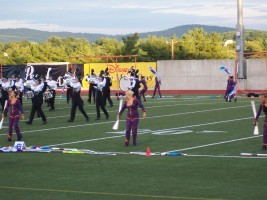
2005 DCI East
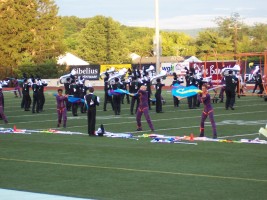
2005 DCI East
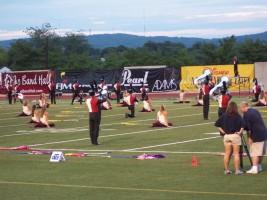
2005 DCI East
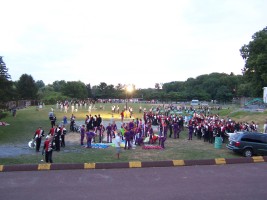
2005 DCI East
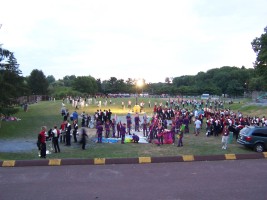
2005 DCI East
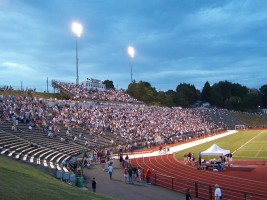
2005 DCI East
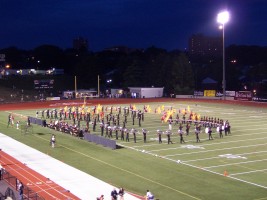
2005 DCI East
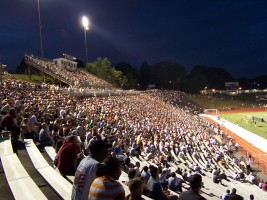
2005 DCI East

2005 DCI East

2005 DCI East

2005 DCI East

2005 DCI East
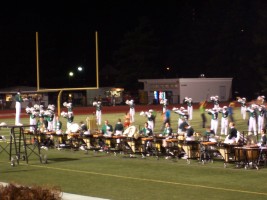
2005 DCI East
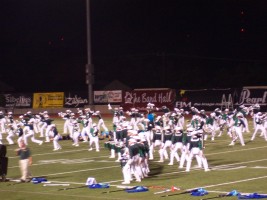
2005 DCI East
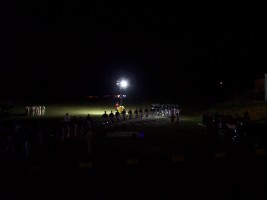
2005 DCI East
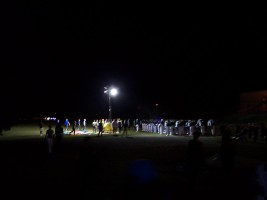
2005 DCI East